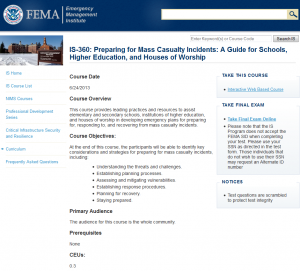
This is the initial case file for a single-victim school shooting case. This litigation was settled soon after a school safety expert witness for the defense was suddenly withdrawn from the case. He was withdrawn soon after plaintiff’s counsel raised significant questions about his credibility. This case illustrates how complex school safety litigation can be.
School Safety Litigation Provides a Unique View
I have reviewed several thousand pages of depositions and other documents relating to school safety lawsuits during the past month. Though I decline the majority of requests to serve as an expert witness, I do accept a few cases each year. The cases I accept are typically large and complex requiring considerable attention to detail. For example, one federal civil action against an independent school resulted in a four week jury trial. The case involved allegations of severe bullying and sexual assault. The case file came up to my sternum when resting on the floor. I was deposed for eight hours by an attorney assisted by four other lawyers. The school’s headmaster was deposed five times and plaintiff’s counsel spent an estimated $3.1 million litigating the school. After deliberating for about 90 minutes, the jury found in favor of the school on all seven allegations.
Reviewing school safety incidents for these types of cases is extremely demanding. Competent expert witnesses carefully review their case files. Though arduous, the process is incredibly revealing. Many of these cases involve terrible tragedies that can provide valuable lessons. One of the main reasons I accept cases as an expert witness is to learn how to better help our clients reduce the chances they will experience safety incidents. These experiences also help us aid our clients in reducing their liability exposure. Reviewing the questions asked by attorneys and the answers provided by the people they depose is extremely informative. Looking at a case through the lens of both defense and plaintiff’s counsel also affords a unique perspective. Seeing a case from these divergent angles is different from what we see when we conduct school security assessments or from the viewpoint I had investigating incidents and testifying in court as police officer.
These experiences help us to help our clients see a different take on both the how and the why of their efforts to make schools safer. Learning from school safety litigation can not only prevent future litigation, but can make our schools safer.




